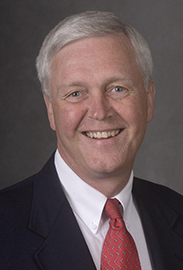
| Aug. 2017 | |||||||||||
| Top stories | |||||||||||
| In the news | |||||||||||
| Photos | |||||||||||
| Contact us | |||||||||||
| Archive | |||||||||||
|
Service is ‘practice of people in public health’ |
Sept. 5, 2017 --
It must be an age thing. Recently I have encountered a lot of people who are retiring. But as I talk to them about their plans, it is clear that few intend to totally drop out of the field in which they have worked. They remain committed to the purposes they served. I think that is a good thing because the perspectives they have on how we got to where we are can inform us on where we’re going next. I also think it speaks to their dedication to their field and demonstrates a personal integrity we should admire.

As I contemplate this change in career status myself, I also find the desire to stay involved consistent with my colleagues and am hopeful that my future contributions will be seen as similarly beneficial. I’ll leave that to others to judge but will, in that context, offer my own reflections on the SHL, public health and my career.
My first reflection is that I have been extremely fortunate to have worked in public health as it evolved from a practice focused on categorical activities to a field dedicated to improving population health. This year marks my 32nd year in public health, and next year marks the 30th anniversary of the Institute of Medicine’s report on “The Future of Public Health.” The report’s advocacy for a core functional model in the organization and evaluation of the public health services is as vibrant today as it was when penned by its authors in 1988.
Over the years, the elegance of this seminal report has produced a set of services descriptive of the knowledge, skills and abilities necessary for the achievement of population health goals. Aligned areas of expertise, such as laboratories and epidemiology, have adopted similar but topic-specific applications of the services. Logic models and metrics have been developed to describe and evaluate how this emerging-systems approach to public health actually is working. Today, 30 years later, this evolution is being formalized through a Public Health Accreditation Board (PHAB).
The results of this evolution could not be more timely as scientific advances and economic imperatives set the stage for a new era of public health leadership in achieving population health goals. We live in an increasingly complex and global world where exotic diseases are only a plane ride away from the Midwest. Next generation tools are enabling laboratories to associate predisposition and exposure to infectious and toxic agents to acute and chronic disease.
Supporting information systems enable the science of epidemiology to establish new strategies for reducing the prevalence of disease in discrete, socio-economically described communities. As a public administrator, I have been alternatively excited and frustrated by the emerging efforts to integrate public and private resources to address community needs and, most importantly, reduce disparity. This challenge alone would keep me going.
I have also, for the last 11 years, been honored and challenged by the opportunity to direct Iowa’s State Hygienic Laboratory. Like many people - even colleagues in public health - before I joined its staff I had some familiarity with the responsibilities of the lab but not a full appreciation of its details and complexity. I had especially not focused on how much the public health laboratory is affected by the larger externally based changes in capabilities and systems. From this macro perspective, I observed how the development of integrated healthcare delivery systems, new funding models, information systems and health reform policies have all created profound challenges to the sustainability of the public health laboratory.
Entering the field during the height of anxiety over HIV/AIDS, I saw firsthand how vitally important the public health lab is in solving the ever unfolding mysteries of disease. The risk from infectious diseases and environmental threats are omnipresent, and, internally, the labs must also develop the modern capabilities in facilities, technology and lab staff able to apply next generation approaches for the identification of disease and environmental risk. As a lab director, I have been alternatively excited and frustrated by policies and strategies that have offered rhetorical support for public health but have lacked either the depth or/and alignment with larger developments in the health-care economy.
Through it all, despite the challenges, bumps and detours, the most remarkable feature of the lab and of public health practice generally is the dedication of its practitioners to making it all work. Thirty years ago, I was fortunate to meet and work with people who have made lasting contributions to the field. I continue to meet people who clearly will provide that same kind of dedication and leadership for the next 30. Just today I spoke with someone who described, with pride, the fact that he had come into the lab on a weekend night to help get a job done. From my experience, this was not a phenomenon; this is the practice of people in public health. My pride in being associated with this field is a reflection of that dedication. So thank you to all my colleagues, met and unmet, who have made public health the tremendous field of service it is.